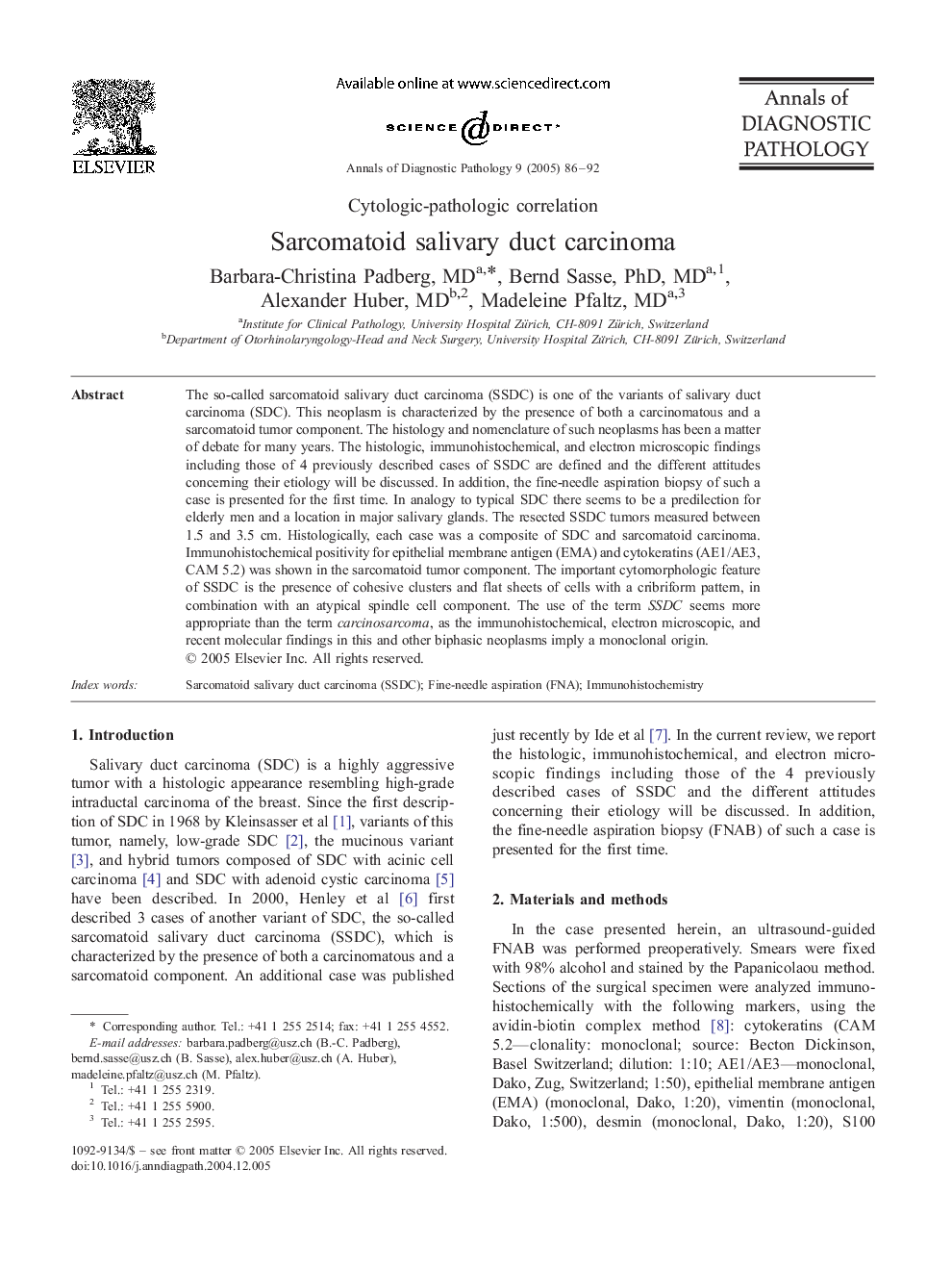| Article ID | Journal | Published Year | Pages | File Type |
|---|---|---|---|---|
| 10090592 | Annals of Diagnostic Pathology | 2005 | 7 Pages |
Abstract
The so-called sarcomatoid salivary duct carcinoma (SSDC) is one of the variants of salivary duct carcinoma (SDC). This neoplasm is characterized by the presence of both a carcinomatous and a sarcomatoid tumor component. The histology and nomenclature of such neoplasms has been a matter of debate for many years. The histologic, immunohistochemical, and electron microscopic findings including those of 4 previously described cases of SSDC are defined and the different attitudes concerning their etiology will be discussed. In addition, the fine-needle aspiration biopsy of such a case is presented for the first time. In analogy to typical SDC there seems to be a predilection for elderly men and a location in major salivary glands. The resected SSDC tumors measured between 1.5 and 3.5 cm. Histologically, each case was a composite of SDC and sarcomatoid carcinoma. Immunohistochemical positivity for epithelial membrane antigen (EMA) and cytokeratins (AE1/AE3, CAM 5.2) was shown in the sarcomatoid tumor component. The important cytomorphologic feature of SSDC is the presence of cohesive clusters and flat sheets of cells with a cribriform pattern, in combination with an atypical spindle cell component. The use of the term SSDC seems more appropriate than the term carcinosarcoma, as the immunohistochemical, electron microscopic, and recent molecular findings in this and other biphasic neoplasms imply a monoclonal origin.
Related Topics
Health Sciences
Medicine and Dentistry
Pathology and Medical Technology
Authors
Barbara-Christina MD, Bernd PhD, MD, Alexander MD, Madeleine MD,
